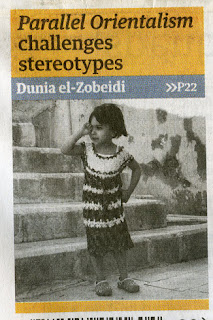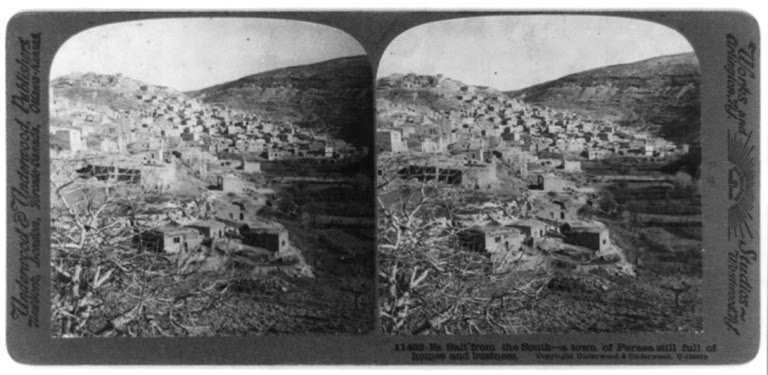Salt (Arabic: السلط Al-Salt — pronounced Es-Sult or Es-Salt) is an ancient agricultural town and administrative centre in west-central Jordan. It is on the old main highway leading from Amman to Jerusalem. Situated in the Balqa highland, about 790–1,100 metres above sea level, the town is built in the crook of three hills, close to the Jordan Valley. One of the three hills, (Jebal Al Qal'a), is the site of a 13th-century ruined fortress.
Complete reading about Salt city
Es Salt back in history of photography
Collections:
Matson (G. Eric and Edith) Photograph Collection
Title: General view of Es-Salt
Creator(s): Matson Photo Service, photographer
Date Created/Published: between 1950 and 1977
Title: General view of Es-Salt
Creator(s): American Colony (Jerusalem). Photo Dept., photographer
Date Created/Published: [between 1898 and 1914]
Title: A home in Es-Salt. Showing interior of a peasant home.
Creator(s): American Colony (Jerusalem). Photo Dept., photographer
Date Created/Published: [approximately 1920 to 1933]
Title: Bedouin of Es-Salt, sitting in doorway, sewing.
Creator(s): American Colony (Jerusalem). Photo Dept., photographer
Date Created/Published: [approximately 1920 to 1933]
Creator(s): American Colony (Jerusalem), Photo Dept.,
Date Created/Published: [approximately 1920 to 1933]
Title: Bedouin life in Trans-Jordan. Semi Bedouin types of Es Salt. Young man and mother at hot springs of Zerka Ma'in
Title: Street in Es-Salt (Salt in Transjordan)
Creator(s): Matson Photo Service, photographer
Date Created/Published: [between 1940 and 1946]
Title: The High Commissioner's first visit to Transjordan. Sir Herbert Samuel passing through street of Es-Salt
Creator(s): American Colony (Jerusalem) Photo Dept., photographer
Date Created/Published: [between 1920 and 1925]
Creator(s):
Underwood & Underwood, publisher
Stereograph Card
Date Created/Published: c1913 Sept. 29.
All pictures belong to
library of congress





























